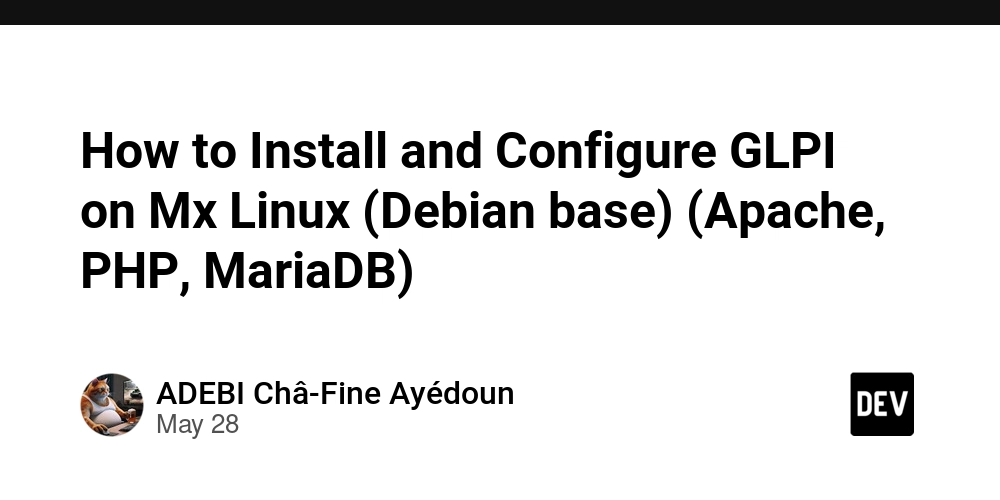EcoCommute - Smart Public Transit Navigation Assistant
This is a submission for the Amazon Q Developer "Quack The Code" Challenge: Exploring the Possibilities What I Built EcoCommute is a Chrome extension designed to promote and facilitate the use of public transportation by making it more accessible, user-friendly, and environmentally conscious. The extension integrates with map services (like Google Maps and Apple Maps) to provide enhanced transit navigation with a focus on sustainability. Key Features and Appeal: Smart Route Planning: The extension optimizes travel routes based on carbon footprint, travel time, and user preferences, making public transit more convenient. Real-time Transit Updates: Users receive live information about delays, crowding levels, and service changes, addressing a common pain point of public transportation. Environmental Impact Tracking: The app calculates and displays emissions saved by choosing public transit over driving, appealing to environmentally conscious users. Gamification Elements: The extension incorporates rewards, badges, and community challenges (as seen in the achievements.html file) to make sustainable transportation choices more engaging and fun. Eco Explorer - Achieved after saving at least 5kg of CO₂ Green Commuter - Achieved after saving at least 20kg of CO₂ Eco Warrior- Achieved after saving at least 50kg of CO₂ Climate Champion - The highest rank, achieved after saving at least 100kg of CO₂ Personalization: The system learns user preferences over time to provide increasingly relevant transit recommendations. The project's appeal lies in its combination of practical utility (making transit easier to use) with environmental consciousness and gamification elements that encourage sustainable behavior change. It transforms the often frustrating experience of public transportation into something more predictable, personalized, and even rewarding. Technology Stack Frontend: JavaScript, HTML/CSS, React Backend: AWS Lambda, API Gateway, DynamoDB Authentication: Amazon Cognito Data Processing: AWS Step Functions, EventBridge Analytics: Amazon QuickSight, Kinesis Walkthrough Here's a visual walkthrough of EcoCommute's core features: You can take a further look at the workflow here: https://whimsical.com/embed/NDiDjgbsX4CaUUAKt5uaru@6HYTAunKLgTVNJoSdQzE7A7aWWgmNanamD19RL6zbQP8BQ6 Code Repository ojsam77 / EcoCommute A browser extension that helps users reduce their carbon footprint through smart public transit navigation EcoCommute - Smart Public Transit Navigation Assistant Project Overview EcoCommute is a comprehensive solution designed to make public transit more accessible, user-friendly, and environmentally sustainable. By combining real-time transit data, personalized route optimization, and gamification elements, EcoCommute encourages users to make eco-friendly transportation choices. Key Features Smart Route Planning: Optimizes routes based on carbon footprint, time, and user preferences Real-time Transit Updates: Provides live information on delays, crowding, and service changes Carbon Footprint Tracking: Calculates and displays emissions saved compared to driving Gamification Elements: Rewards sustainable choices with points, badges, and community challenges Personalized Recommendations: Learns user preferences to suggest optimal transit options Project Components Browser Extension: User-facing interface for route planning and tracking Serverless Backend: AWS-powered infrastructure for data processing and storage Transit Data Integration: APIs for real-time transit information User Profile Management: Personalization and preference storage Technology Stack Frontend… View on GitHub Project Structure How I Used Amazon Q Developer Amazon Q Developer was instrumental in several innovative ways: Infrastructure Generation: Used Q Developer to generate and optimize AWS serverless infrastructure code, particularly for complex Step Functions workflows handling transit data processing. API Integration: Leveraged Q Developer's code generation capabilities to create robust integration patterns for multiple transit APIs, ensuring consistent data handling across different transit providers. Optimization Algorithms: Utilized Q Developer to develop and refine route optimization algorithms that balance transit time, carbon emissions, and user preferences. Testing and Validation: Employed Q Developer for generating comprehensive test suites that validate both the extension's functionality and the accuracy of carbon footprint calculations. Logo Creation: Amazon Q Developer was able to flex its generative AI muscle by iterating through 5 drafts of the logo icon by repeatedly following the simple prompt "make it more realistic" : Key Insight: Amazon Q Developer excelled at understanding the environmenta

This is a submission for the Amazon Q Developer "Quack The Code" Challenge: Exploring the Possibilities
What I Built
EcoCommute is a Chrome extension designed to promote and facilitate the use of public transportation by making it more
accessible, user-friendly, and environmentally conscious. The extension integrates with map services (like Google Maps
and Apple Maps) to provide enhanced transit navigation with a focus on sustainability.
Key Features and Appeal:
- Smart Route Planning: The extension optimizes travel routes based on carbon footprint, travel time, and user preferences, making public transit more convenient.
- Real-time Transit Updates: Users receive live information about delays, crowding levels, and service changes, addressing a common pain point of public transportation.
- Environmental Impact Tracking: The app calculates and displays emissions saved by choosing public transit over driving, appealing to environmentally conscious users.
-
Gamification Elements: The extension incorporates rewards, badges, and community challenges (as seen in the
achievements.html file) to make sustainable transportation choices more engaging and fun.- Eco Explorer - Achieved after saving at least 5kg of CO₂
- Green Commuter - Achieved after saving at least 20kg of CO₂
- Eco Warrior- Achieved after saving at least 50kg of CO₂
- Climate Champion - The highest rank, achieved after saving at least 100kg of CO₂
Personalization: The system learns user preferences over time to provide increasingly relevant transit
recommendations.
The project's appeal lies in its combination of practical utility (making transit easier to use) with environmental
consciousness and gamification elements that encourage sustainable behavior change. It transforms the often frustrating
experience of public transportation into something more predictable, personalized, and even rewarding.
Technology Stack
- Frontend: JavaScript, HTML/CSS, React
- Backend: AWS Lambda, API Gateway, DynamoDB
- Authentication: Amazon Cognito
- Data Processing: AWS Step Functions, EventBridge
- Analytics: Amazon QuickSight, Kinesis
Walkthrough
Here's a visual walkthrough of EcoCommute's core features:
You can take a further look at the workflow here:
https://whimsical.com/embed/NDiDjgbsX4CaUUAKt5uaru@6HYTAunKLgTVNJoSdQzE7A7aWWgmNanamD19RL6zbQP8BQ6
Code Repository
 ojsam77
/
EcoCommute
ojsam77
/
EcoCommute
A browser extension that helps users reduce their carbon footprint through smart public transit navigation
Project Overview
EcoCommute is a comprehensive solution designed to make public transit more accessible, user-friendly, and environmentally sustainable. By combining real-time transit data, personalized route optimization, and gamification elements, EcoCommute encourages users to make eco-friendly transportation choices.
Key Features
- Smart Route Planning: Optimizes routes based on carbon footprint, time, and user preferences
- Real-time Transit Updates: Provides live information on delays, crowding, and service changes
- Carbon Footprint Tracking: Calculates and displays emissions saved compared to driving
- Gamification Elements: Rewards sustainable choices with points, badges, and community challenges
- Personalized Recommendations: Learns user preferences to suggest optimal transit options
Project Components
- Browser Extension: User-facing interface for route planning and tracking
- Serverless Backend: AWS-powered infrastructure for data processing and storage
- Transit Data Integration: APIs for real-time transit information
- User Profile Management: Personalization and preference storage
Technology Stack
- Frontend…
Project Structure
How I Used Amazon Q Developer
Amazon Q Developer was instrumental in several innovative ways:
Infrastructure Generation: Used Q Developer to generate and optimize AWS serverless infrastructure code, particularly for complex Step Functions workflows handling transit data processing.
API Integration: Leveraged Q Developer's code generation capabilities to create robust integration patterns for multiple transit APIs, ensuring consistent data handling across different transit providers.
Optimization Algorithms: Utilized Q Developer to develop and refine route optimization algorithms that balance transit time, carbon emissions, and user preferences.
Testing and Validation: Employed Q Developer for generating comprehensive test suites that validate both the extension's functionality and the accuracy of carbon footprint calculations.
Logo Creation: Amazon Q Developer was able to flex its generative AI muscle by iterating through 5 drafts of the logo icon by repeatedly following the simple prompt "make it more realistic" :
Key Insight: Amazon Q Developer excelled at understanding the environmental context of the code being generated. When asked to optimize serverless functions, it automatically suggested patterns that reduced computational overhead, thereby minimizing the carbon footprint of the application itself.
Development Tip: Use natural language to describe environmental goals to Q Developer. For example, instead of asking for generic optimization, specify "optimize this function for minimal environmental impact while maintaining performance." This helps Q Developer generate more environmentally conscious code suggestions.
The project demonstrates how Amazon Q Developer can be used not just for code generation, but as a partner in creating environmentally conscious software solutions that have real-world impact. By combining its AI capabilities with environmental awareness, we're pushing the boundaries of what's possible in sustainable software development.
I believe this submission aligns perfectly with the "Exploring the Possibilities" prompt as it demonstrates an unexpected use of Amazon Q Developer - combining software development assistance with environmental impact consciousness to create tools that make sustainable choices easier for both developers and end-users.











































































































































































![[The AI Show Episode 156]: AI Answers - Data Privacy, AI Roadmaps, Regulated Industries, Selling AI to the C-Suite & Change Management](https://www.marketingaiinstitute.com/hubfs/ep%20156%20cover.png)
![[The AI Show Episode 155]: The New Jobs AI Will Create, Amazon CEO: AI Will Cut Jobs, Your Brain on ChatGPT, Possible OpenAI-Microsoft Breakup & Veo 3 IP Issues](https://www.marketingaiinstitute.com/hubfs/ep%20155%20cover.png)



































































































































































































































































_incamerastock_Alamy.jpg?width=1280&auto=webp&quality=80&disable=upscale#)
_Brain_light_Alamy.jpg?width=1280&auto=webp&quality=80&disable=upscale#)






























































































![Nothing Phone (3) has a 50MP ‘periscope’ telephoto lens – here are the first samples [Gallery]](https://i0.wp.com/9to5google.com/wp-content/uploads/sites/4/2025/06/nothing-phone-3-telephoto.jpg?resize=1200%2C628&quality=82&strip=all&ssl=1)


























































































